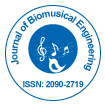Research Article
Music, the Body in Time, and Self-Similarity Concepts
Abstract
It is shown in this paper that the structural configuration of music exactly parallels the structural configuration of the human body. Music and biological systems share time as a common denominator, since both derive from, and exist in the time dimension. Music and biological systems also share as a common denominator certain features of self-similarity that can be quantified by power-law formulations. Discussed herein is how further investigations into these two common features—selfsimilarity as an architectural property of both music and the human body, and space-time as common dimensions of perception—can provide some insights into specific mechanisms by which the six elements of music—rhythm, melody, harmony, timbre, dynamics, and form—succeed in eliciting profound physiological responses. Once these mechanisms are understood, they can be exploited to develop diagnostic protocols which, in turn, can provide a scientific basis for using music as a clinical intervention in a variety of diagnosed populations.

 Spanish
Spanish  Chinese
Chinese  Russian
Russian  German
German  French
French  Japanese
Japanese  Portuguese
Portuguese  Hindi
Hindi